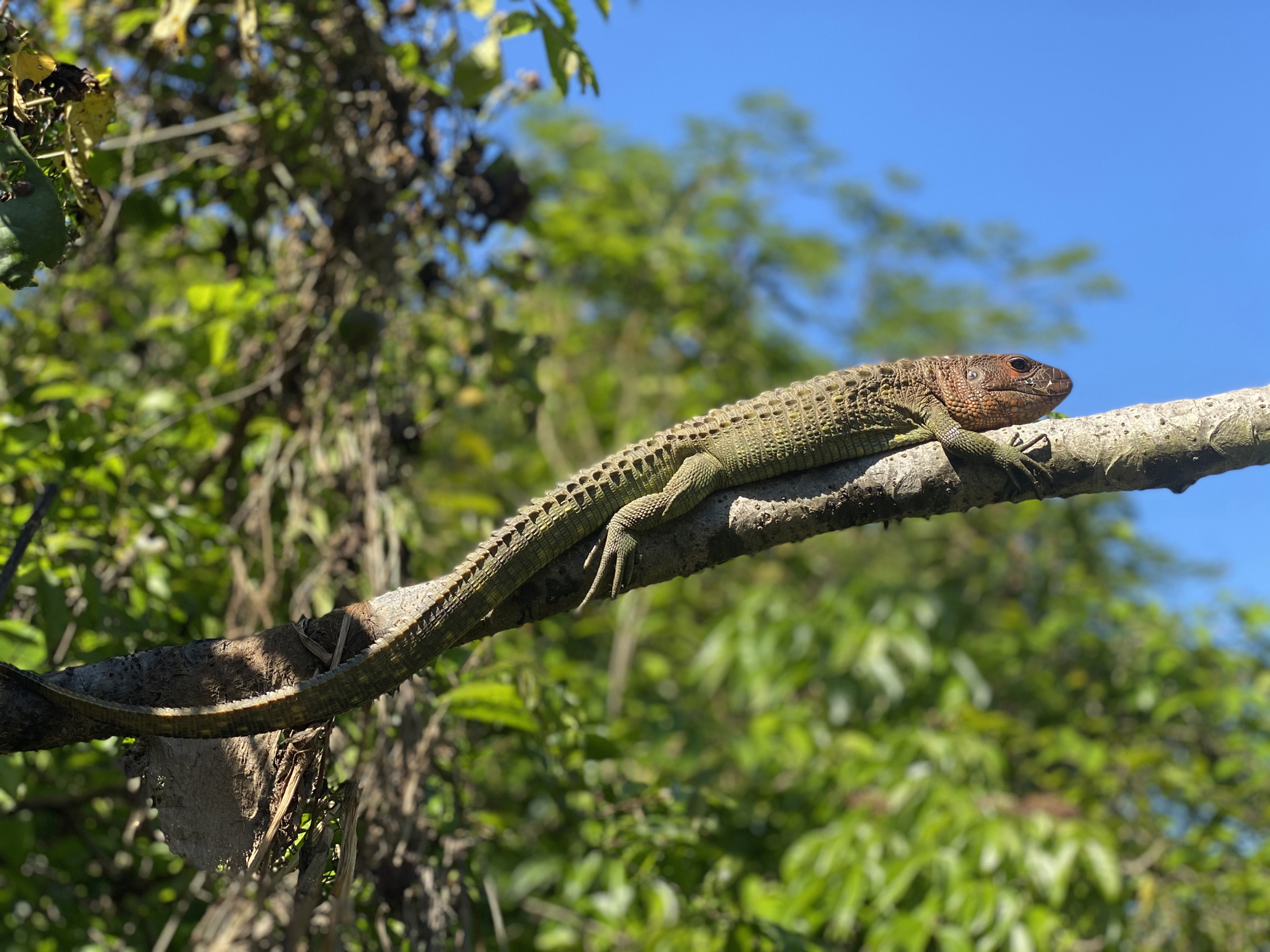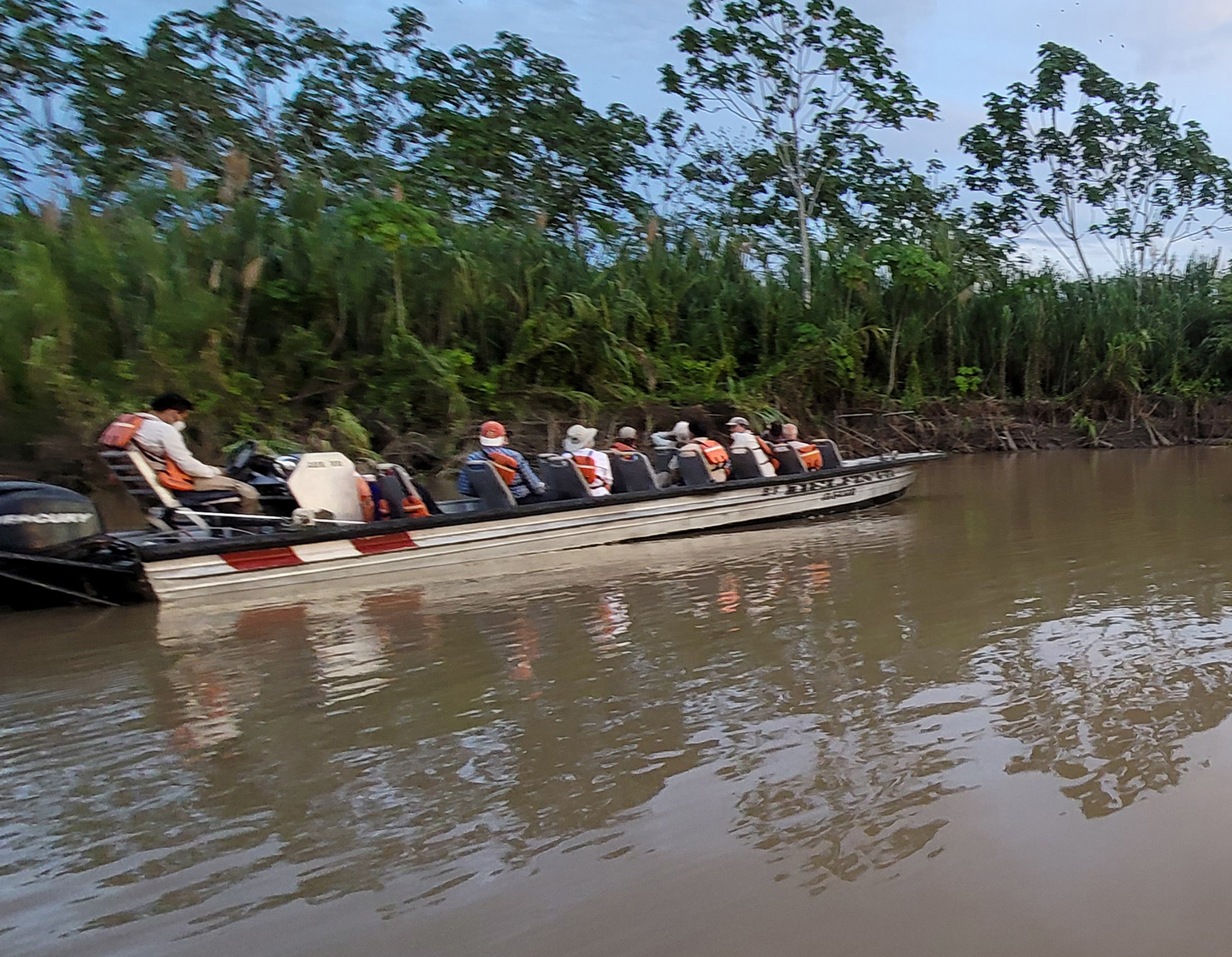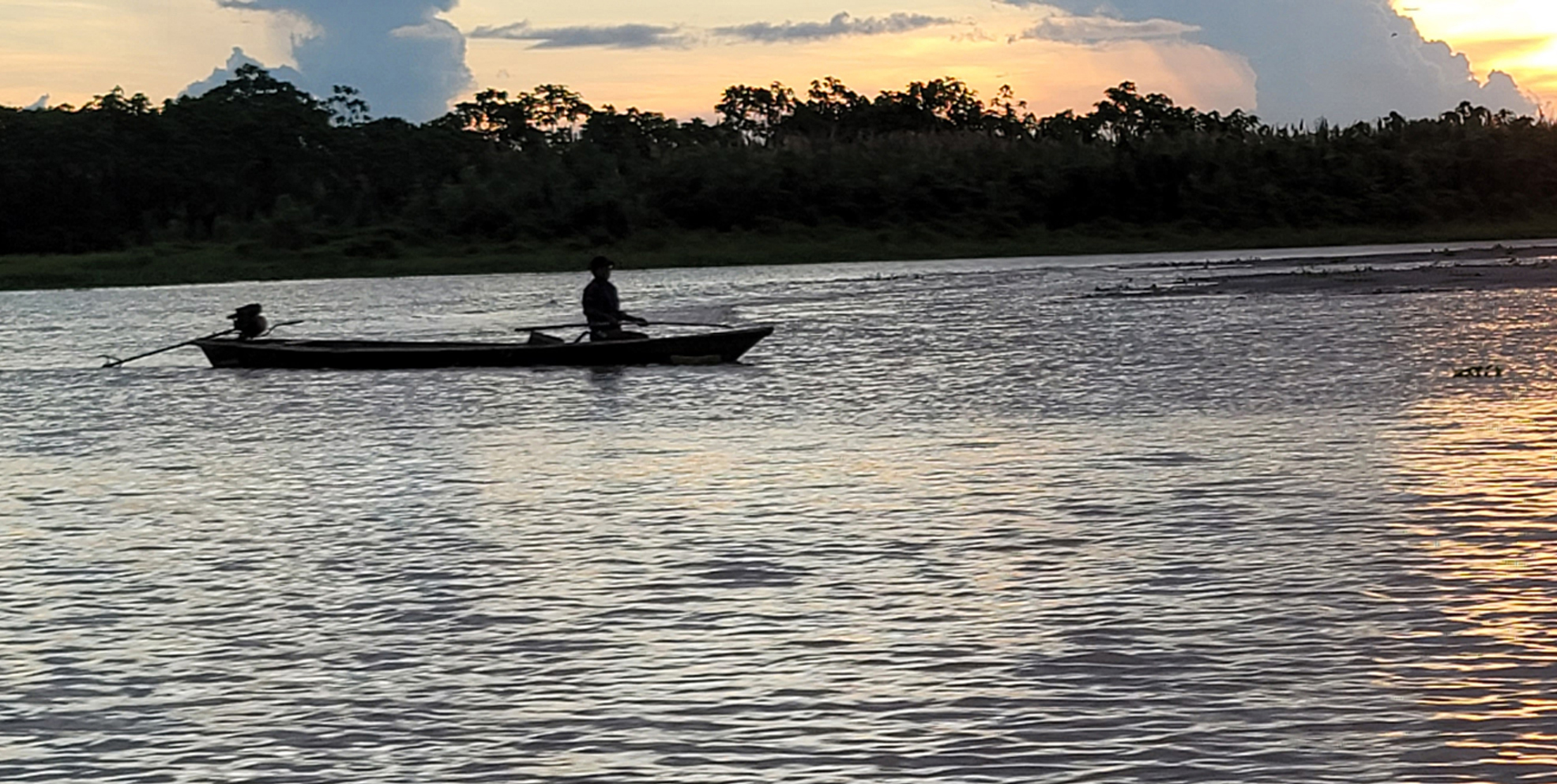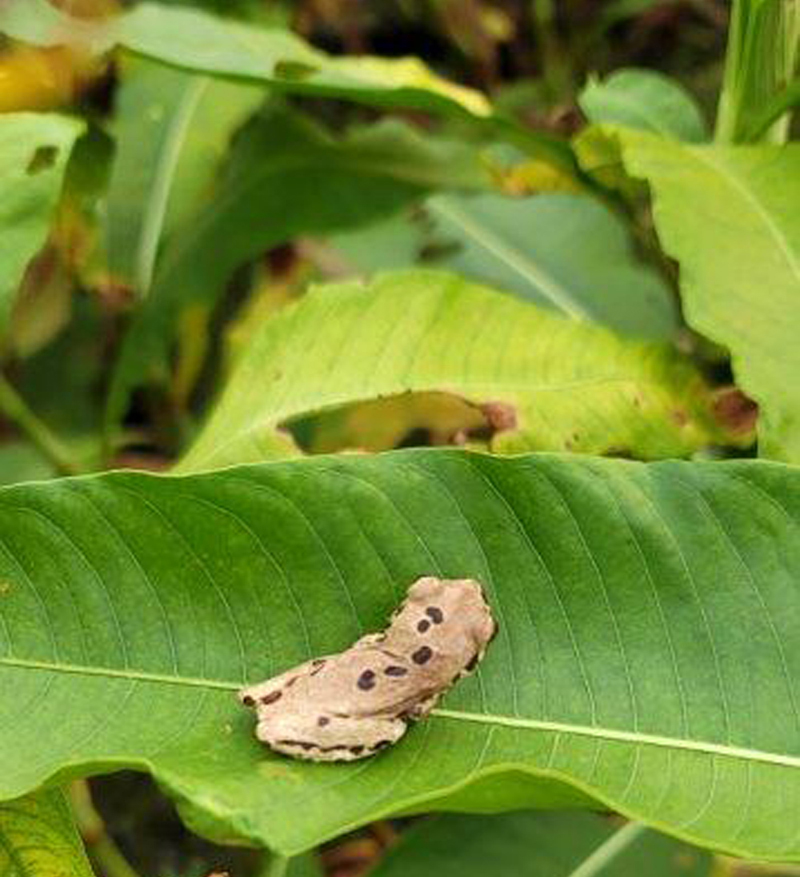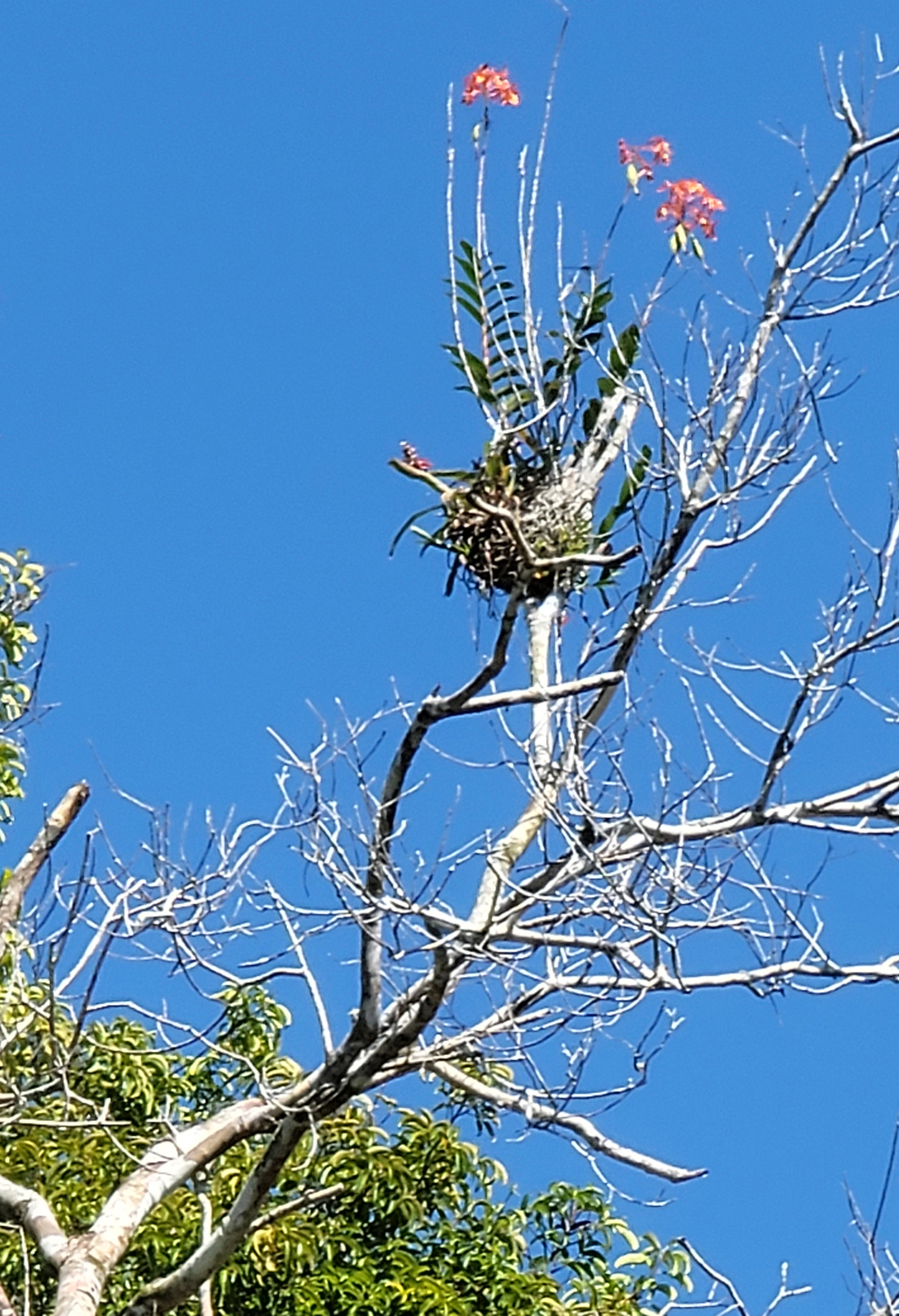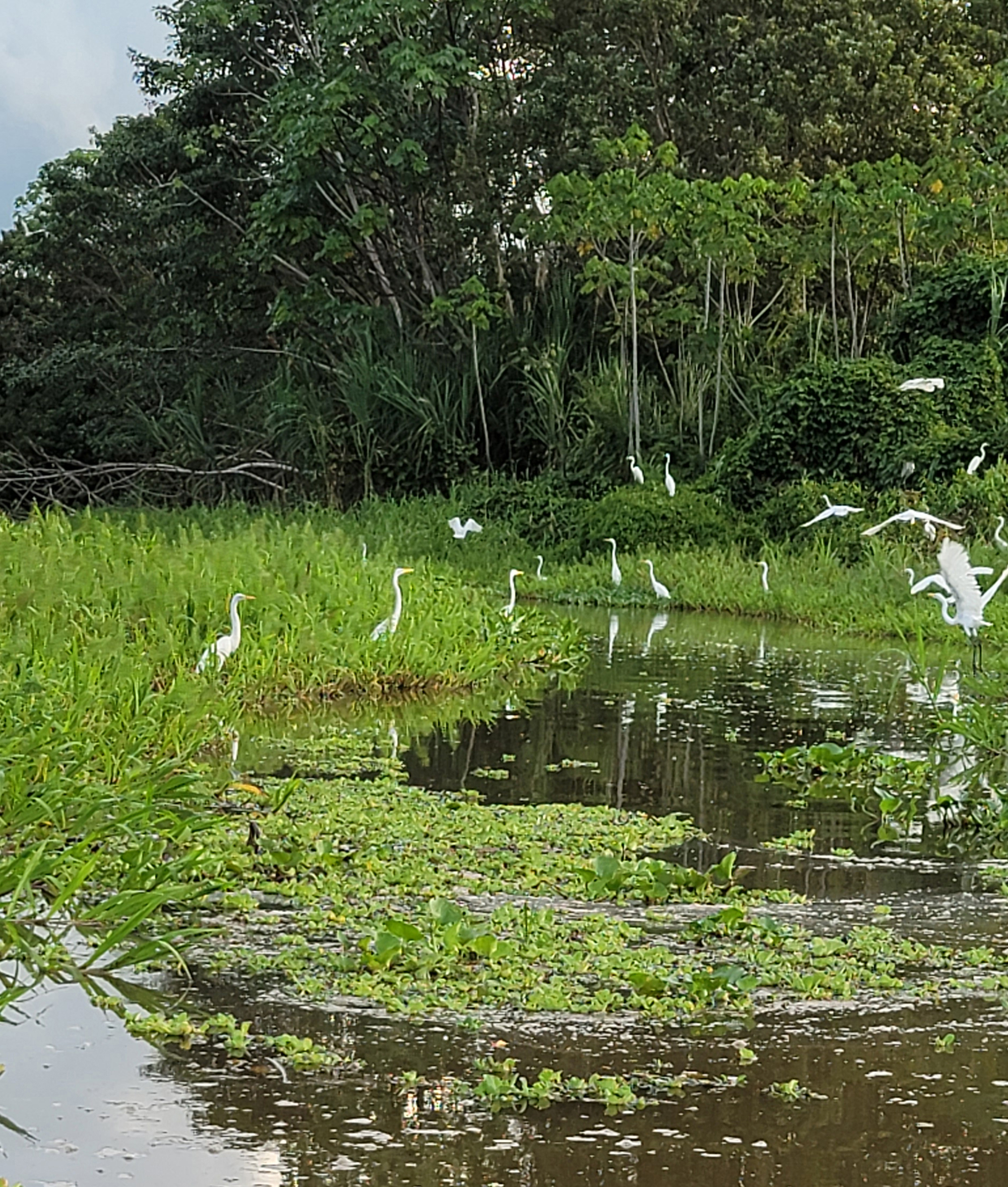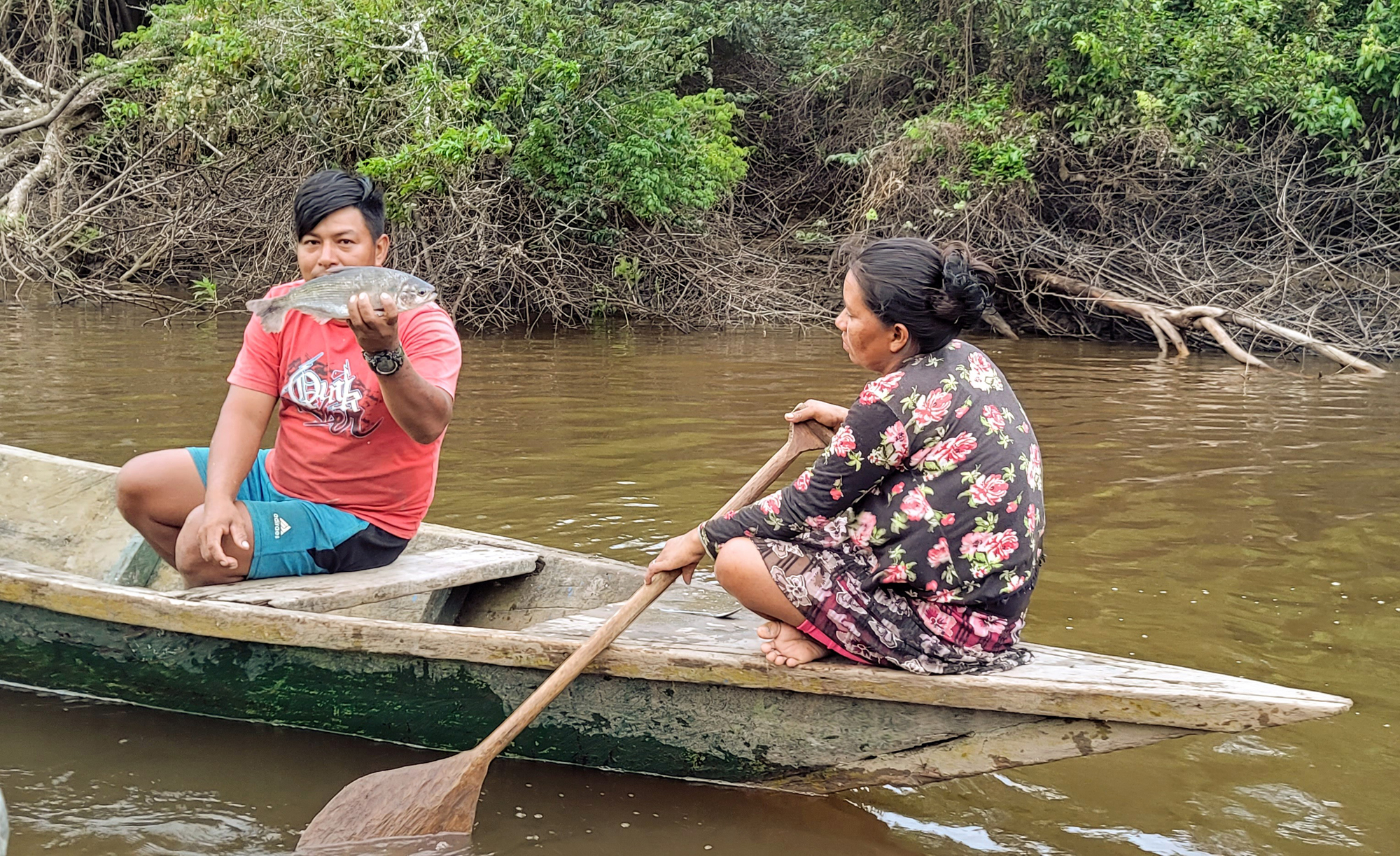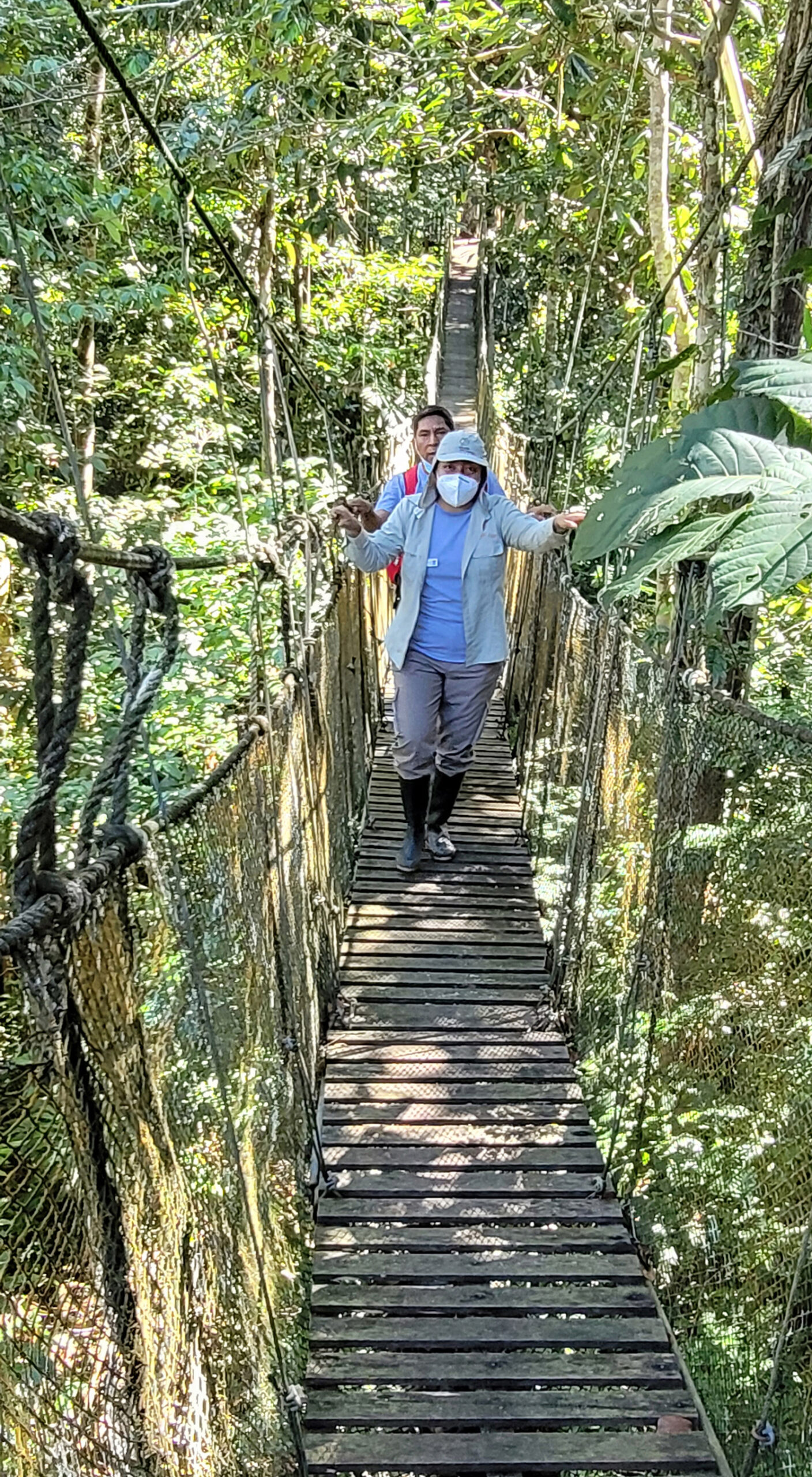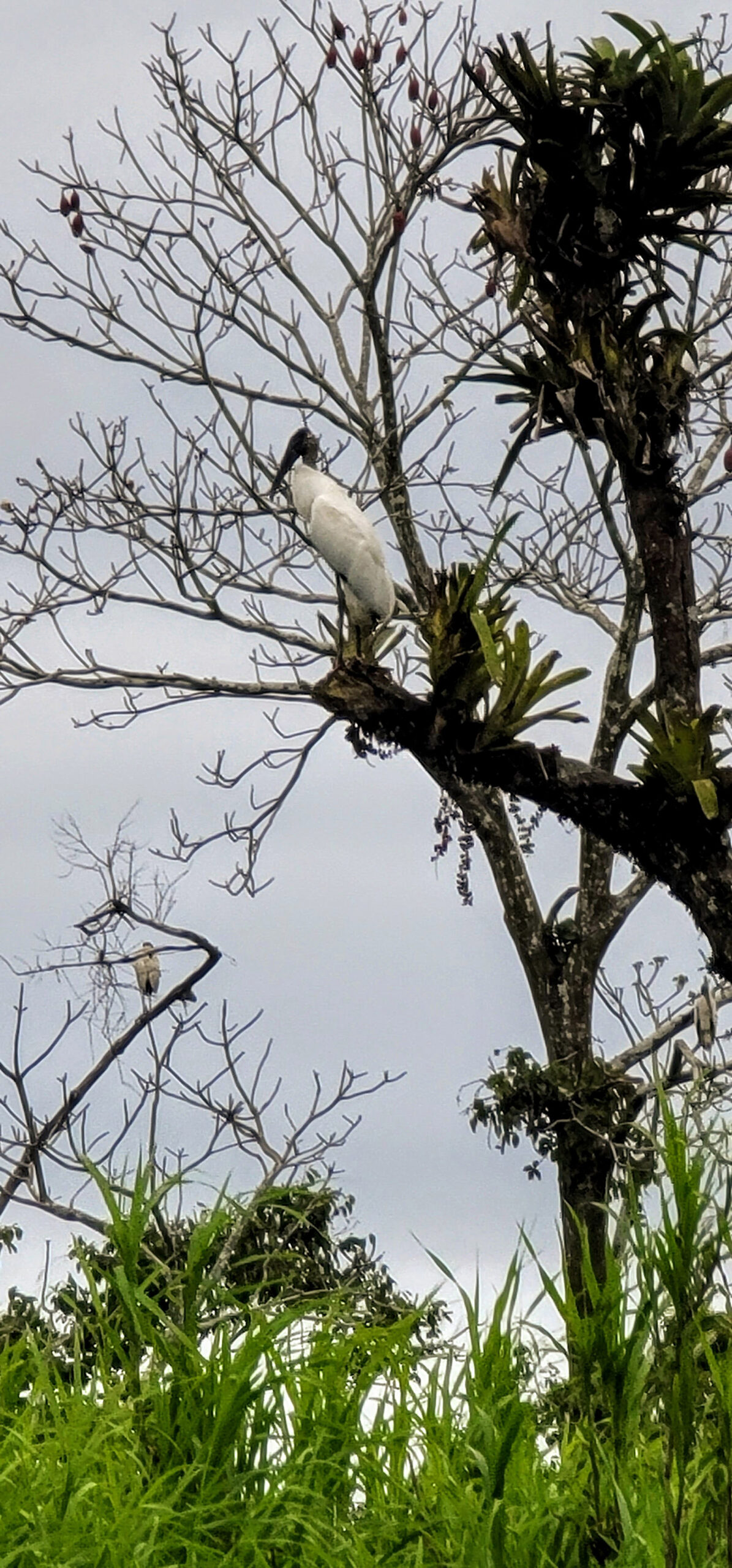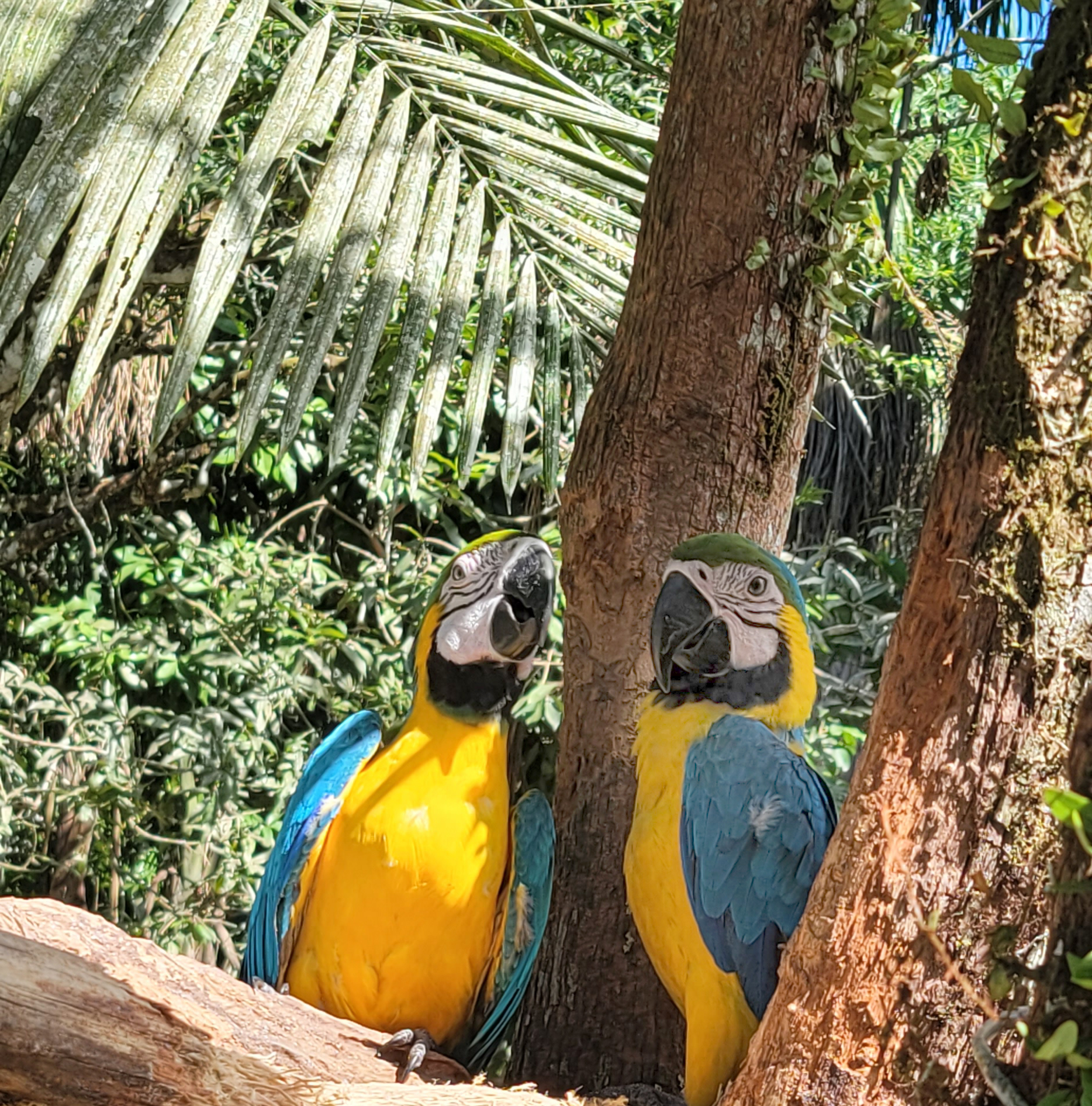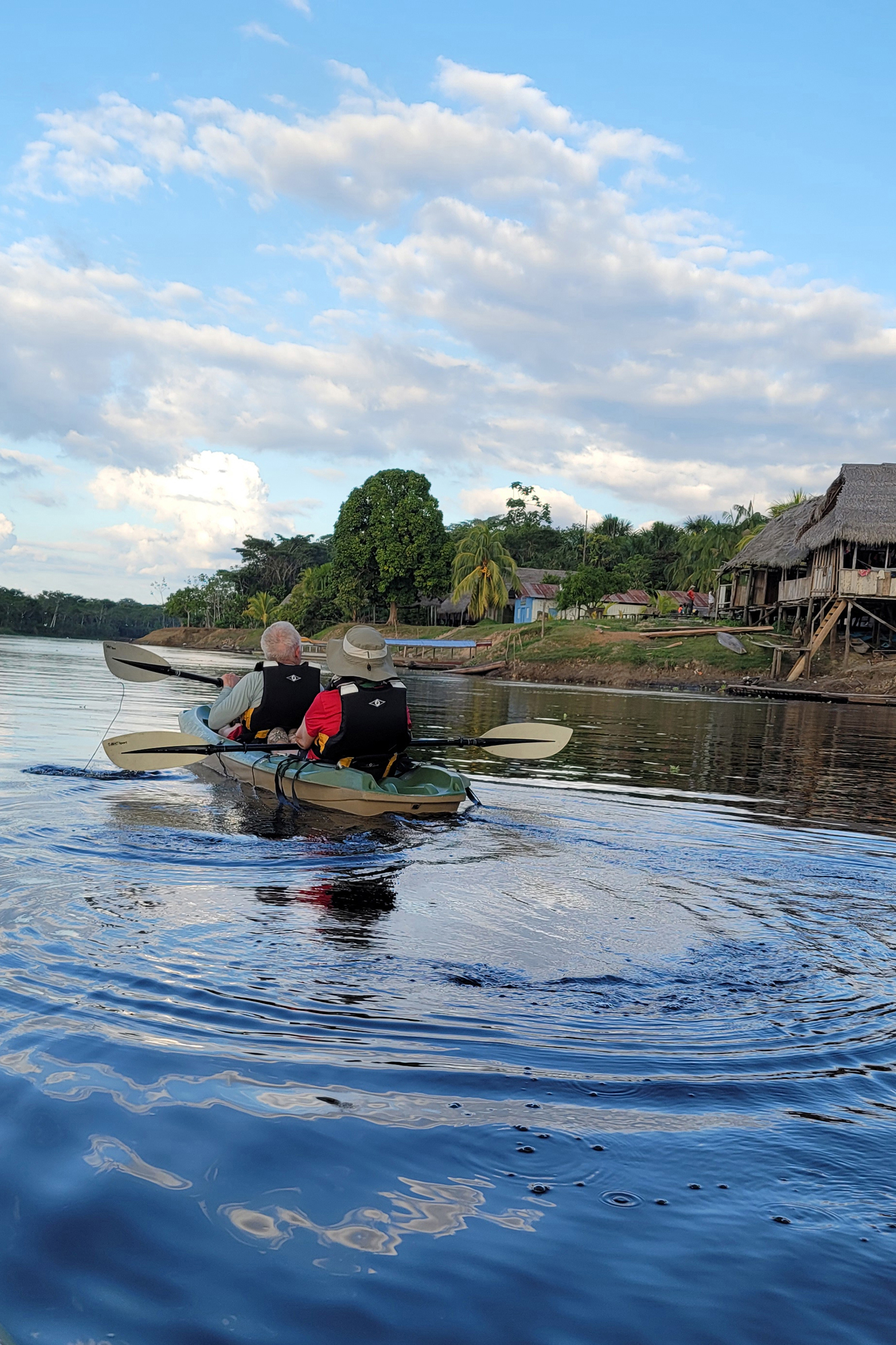Text and Photos by Mary L. Peachin with cover by David Peachin
November, 2021, Vol. 25, No. 2
Flying over the spine of the Andes, our plane landed in Iquitos. Landlocked, the village, accessible only by plane or boat, serves as the gateway to Peru’s Amazon. For those of us who dive, fish, or hunt, we have seen the impact of climate change. Exploring Peru’s Amazon is quite different from what we read about the destruction in Brazil’s section of the river.
In the village of Nauta, the 30-passenger river boat, Delfin III, embarked along the banks of the Marañon River, an Amazon tributary. Its name literally means “end of the road.”
Arriving at our first destination, we enjoyed a unique siting. Grey and pink dolphin rolled and breeched as they fed on sardines. Both dolphin species are small. The pink color is located on its belly. Terns, black skimmers, egrets, a black oriole with yellow head fluttered above feeding on scrapes.
Gliding through a tranquil lagoon, rich in birdlife, we searched for monkeys and three-toed sloths. The sloth’s sedentary lifestyle is spent clinging high on their favorite leafless cecropia tree trunk. When nature calls weekly, they make their way to the ground to do their business.
Amazon wildlife is skilled at blending into the dense vegetation environment. A keen eye Is required to view animals. Fortunately, our guides were experts at spotting even the most camouflaged.
In Clavero lagoon, we observed egrets, herons, hawks and long-legged neotropical cormorants. In nearby blackwater lagoons, wattled jacanas competed for food with spiders, grasshoppers, and butterflies. In Supay Cocha, a lagoon teeming with fish, we observed more troops of squirrel monkeys and flocks of birds, including black-and-white-tailed trogons and paradise tanagers.
The following morning, we passed Belluda Caño Creek near Yanallpa, home to the Ribereño people. These indigenous dwellers have lived in the rain forest for centuries.
The Dorado River was our first stop inside Pacaya Samiria National Reserve. Established in 1982, to preserve the northern Amazon wilderness biodiversity, it is Peru’s largest protected area.
Motoring slowly, we searched for snail kites, festive parrots, olive-spotted hummingbirds, parakeets, wood creepers and endangered scarlet macaws. Squirrel monkeys moved in large, noisy troops overhead while iguanas lazed in the sun.
We paddled kayaks in the clear dark-tea colored water of the Zapote River observing squirrel, monk saki, and brown capuchin monkeys.
In the heart of the Pacaya Samiria Reserve, the Pacaya River landscape, known as the “mirrored forest,” covers 10,000 square miles around the headwaters of the Amazon and is home to Peru’s greatest concentration of wildlife.
The layered richness of the reserve’s mixed habitats included 85 lakes, 250 fish species, 132 species of elusive mammals, plus 150 reptiles and amphibian species, along with 450 species of birds. The reserve also contains the largest variety of flora in Peru, including large bromeliads and 22 different orchid species.
Our expert naturalists led a dawn, pre-breakfast birding excursion along Sapuena Creek, a blackwater stream leading to a large lake. They observed purple and azure gallinules and wattled jacanas along the lakeshore. During the afternoon, we cruised upstream to reach the Yarapa River, a remote tributary of the Upper Amazon. Turning into the Yarapa, as we searched for colorful plum-throated cotinga, we were distracted by pink dolphins frolicking nearby.
Heading up the Yanayacu Pucate and the other main tributary of the Amazon, the Marañon River, we motored across Lago La Posada into the Amazon Natural Park. Its suspension bridge, suspended 85 feet above the jungle canopy, covers a third of a mile through the upper tier of the rain forest. It is one of the longest canopy walks in the world. The treetops provide an excellent vantage point for observing the forest, including giant kapoks, strangler figs, palms and trees covered with bromeliad epiphytes.
The Amazon National Park revealed a black oriole with yellow breast, a yellow Caracara with black wings, and white wing doves sharing a pampas grass lined beach with shrill calling red leg lapwings. Wood storks and orange winged parrots flew overhead in formation. We listened to the vocal black-capped Donacobius. A troop of Pygmy marmoset, the smallest of monkey species, monkeys jumped from papaya to grapefruit to mango trees.
Further up the Marañon in a virtually unvisited section of Pacaya Samiria, a place where the Yanayacu and Pucate rivers join, giant kapok with orange hanging fruit, and strangler fig trees lining the banks sheltered a multitude of wildlife.
Early risers were rewarded with the reserve’s most abundant bird and animal life on this morning’s excursion. Departing at sunrise, they followed the Fundo Casual trail, they looked for the brightly colored poison dart frog, leafcutter ants and other intriguing small creatures. They were successful in seeing the toad as well as an anaconda.
As the sun sunk below the canopy, an exciting evening adventure gave us the opportunity to view the rain forest transforming into nightfall. As nocturnal creatures awakened, an orchestra of sounds evolved. Crickets and night birds echo a percussive rhythm. In the darkness, our guides used powerful spotlights to search for wildlife. The eyes of black caiman eyes glistened red in their night light.
Hyacinth lilies were in bloom. Black hoppers fed on the insects attracted to their bloom. Parakeets, a ringed kingfisher, and weaver bird flew above. Thousands of parakeets, their squawking deafening, found this densely forested location a place to sleep.
Trying to get a fish out of villager’s net, not far from a stilted house village, a great black hawk worked hard for an easy catch. A large nomadic troop of Escutcheon monkeys jumped branches. Oro pendulum nests hung from a tree. A black collared hawk ate red fruit while a lineated woodpecker busily pecked at ants. Fishing nets lining the river’s edges were buoyed by the plastic of empty coke bottles. A red-chested black collared hawk shared a branch with a white-winged hawk. Parakeets: cobalt-winged, white wing, and tui fed on seeds along the bank. A horned screamer, with a modified plume, watched from a tree top. Beautiful blue morpho butterflies flitted about.
As we passed a small village, men, some with women set their fish traps for the night’s catch. Using small dugout canoes, several showed their catch including a red belly piranha. As the skies opened, we welcomed the ponchos provided by the crew. It would rain non-stop during the excursion, perhaps preferential to mosquito “happy hour.”
Seeing and hearing the sights and sounds of the jungle, we welcomed our return to the comforts of the Delphin III. It was dry and warm. Never have eight days passed so quickly. While much of the landscape was similar, we continually sighted birds, plants, and critters that were new to us. It was a 420-mile adventure that ranks up there with the best of my global experiences.

